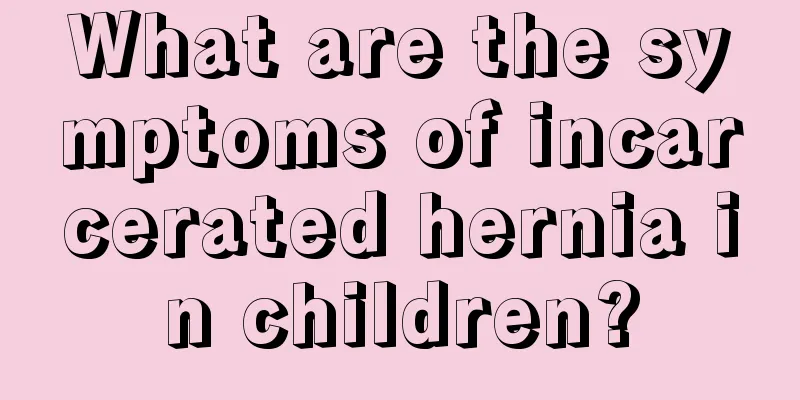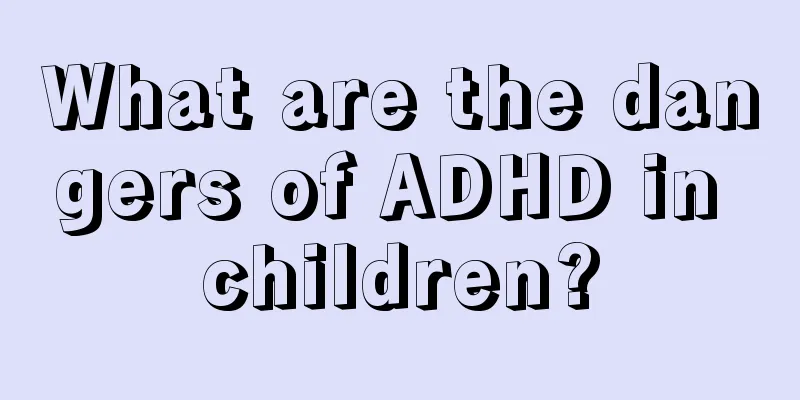What are the symptoms of incarcerated hernia in children?

|
Many parents may have some understanding of pediatric hernia, but they may be confused when they encounter pediatric incarcerated hernia. Because this phenomenon does not happen often, many parents will ignore it. However, if you ignore it, it may affect your child's body. Therefore, you should have a certain understanding of the symptoms of pediatric incarcerated hernia, so that you can deal with it calmly when encountering problems. Hernia incarceration is caused by the long-term prolapse of the small intestine, which causes the small intestine to get stuck in the hernia ring and cannot be retracted. Patients with hernia incarceration often lack attention to the hernia in the early stages of the disease and fail to promptly reduce the hernia after it has prolapsed. The hernial ring is repeatedly stimulated and contracts, resulting in incarceration (stuckness). Hernia incarceration can cause severe pain, and in severe cases it is accompanied by symptoms of hernia incarceration. When the hernia contents suddenly cannot be retracted, causing symptoms such as pain, it is called incarcerated hernia. It is a serious complication of hernia. Incarcerated hernia can occur when the intra-abdominal pressure increases due to strenuous labor, severe coughing, defecation, etc., but it may also occur without obvious causes. The clinical manifestations are sudden enlargement of the hernia mass, accompanied by severe pain. The mass cannot be retracted by lying flat or pushing it with hands. The mass is tense and hard and tender. Severe cases may be accompanied by symptoms of acute intestinal obstruction such as paroxysmal local colic, nausea, vomiting, constipation, and abdominal distension. Once a hernia is incarcerated, it has little chance of retracting on its own. The symptoms of most patients gradually worsen and, if not treated promptly, may further develop into strangulated hernia. Incarcerated hernia and strangulated hernia are sometimes difficult to distinguish; they are often two different stages of a pathological process. In the early stage (within 3-5 hours) of incarcerated hernia, local tenderness is not obvious and strangulation is estimated not to have occurred, so reduction can be attempted. Let the patient lie with the head down and feet elevated, ask the patient to relax as much as possible, breathe deeply, and apply a hot towel to the lump. Then use your right hand to hold up the scrotum, and continue to slowly push the hernia into the abdominal cavity to reposition it. Be careful not to be rough so as not to rupture the intestine. It is best to seek help from a surgeon in time. Through the above explanation, you now know the symptoms of incarcerated hernia in children. In the future, when your child has these problems, you can react in time and take your child for examination or give him some medicine. This will make your child get better faster and will not delay your child's healthy growth. |
<<: Can hernia in children heal on its own?
>>: Which department should children with hernia go to?
Recommend
Child vomiting and diarrhea
Vomiting and diarrhea are common symptoms among c...
How many months does it take for a baby to sit?
Many women are happy when they give birth to a ch...
Children's nose ulcer
When children have nasal sores due to inflamed no...
What are the dangers of taking Xiaoer Qizhen Dan?
Xiaoer Qizhen Dan is actually a common Chinese pa...
Baby conjunctivitis with fever
The baby's body resistance is relatively weak...
At what age should children undergo eyelid ptosis surgery?
With the development of medical technology, plast...
Can children use cooling oil?
I believe many people have used cooling oil, whic...
What should I do if my 1-year-old baby has colic?
When the baby reaches one year old, he can basica...
How to treat red pimples on babies
Generally speaking, in the hot summer, we often f...
How to improve children's physical fitness?
How to improve children's physical fitness? W...
What causes children's involuntary shaking?
Parents must pay attention to children's invo...
Sinusitis in children causing cough
Children suffer from sinusitis and cough, which i...
Why is the child shivering due to cold?
When children have a cold, they are often accompa...
What to do if your baby cries in the middle of the night
There are several reasons why babies cry in the m...
What are the treatments for tooth decay in children?
Teeth are organs used to chew food and play a ver...









